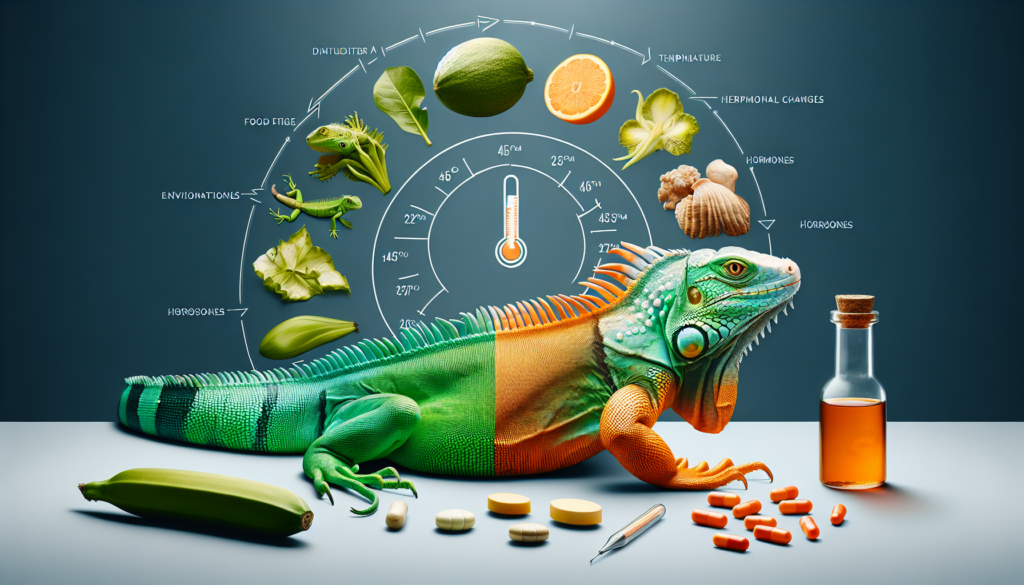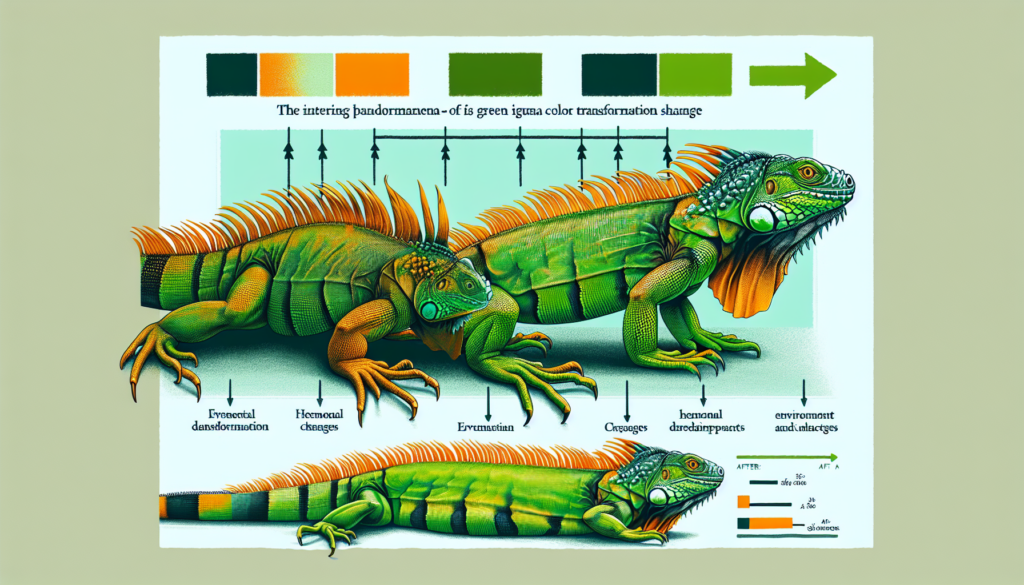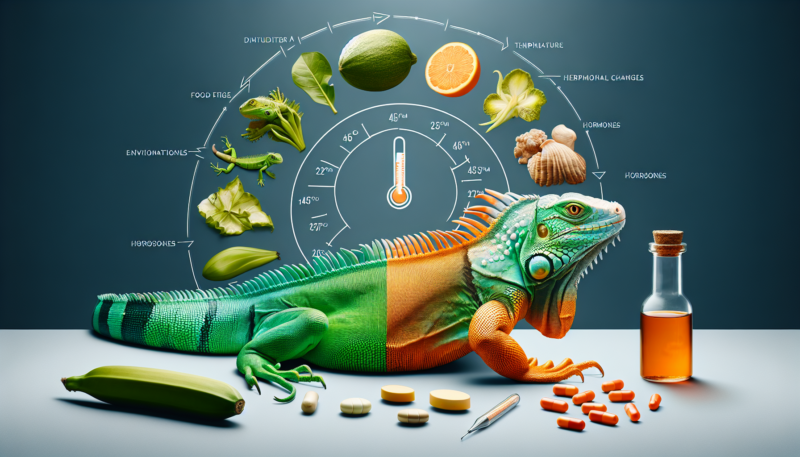Have you ever wondered why green iguanas turn orange? It’s a fascinating color change mystery that has puzzled scientists for years. Green iguanas are known for their vibrant green color, but during certain times and conditions, they can undergo a dramatic transformation and turn a brilliant shade of orange. In this article, we will explore the reasons behind this intriguing phenomenon and delve into the scientific explanations that shed light on this peculiar color change. So, get ready to uncover the secrets of why green iguanas turn orange!
Why do green iguanas turn orange?

Background information on green iguanas
Green iguanas (Iguana iguana) are large, arboreal lizards native to Central and South America. They are known for their vibrant green coloration, which helps them blend in with their leafy surroundings. Green iguanas typically have a long slender body, a crest of spines running down their back, and long, powerful tails. They can grow up to six feet in length and are excellent climbers.
Description of color change phenomenon
One of the most fascinating aspects of green iguanas is their ability to change their color. While they are generally green, they can turn various shades of orange, brown, and even gray. This color change phenomenon occurs due to a combination of genetic, environmental, behavioral, and hormonal factors.
Possible causes for color change
The color change in green iguanas can be attributed to several factors. Genetic factors play a role in determining the baseline pigmentation and coloration of an individual iguana. Environmental factors, such as temperature, humidity, and UV exposure, can influence the intensity and duration of color change. Behavioral factors, such as social interactions and stress, may also contribute to color change. Additionally, hormonal influences, including seasonal fluctuations, can trigger shifts in pigmentation.
Discussion on the role of diet in color change
The diet of green iguanas plays a significant role in their color change. These reptiles are herbivores, consuming a variety of leaves, flowers, and fruits. The pigments present in their diet, such as carotenoids, can influence the coloration of their skin. For example, a diet rich in orange and red pigments may result in a more orange or reddish coloration. Seasonal variations in food availability can also affect color change, as different plants may provide varying levels of pigments throughout the year.

Role of environmental factors in color change
Environmental factors have a profound impact on the color change of green iguanas. Temperature plays a crucial role, as it can affect the pigmentation process. Higher temperatures may contribute to the production of darker pigments, resulting in a more intense color change. Humidity levels and UV exposure also influence color change by altering the skin’s ability to absorb or reflect light. Moreover, different geographic locations may have distinct color change patterns due to variations in environmental conditions.
Hormonal influences on color change
Hormones are another essential factor in the color change of green iguanas. Hormonal pathways and mechanisms are responsible for initiating and regulating pigmentation processes. Seasonal hormone fluctuations can trigger changes in the production and distribution of pigments, thus influencing the coloration of the skin. Additionally, interactions between hormones and environmental factors, such as temperature and photoperiod, further affect the timing and intensity of color change.
Age-related color change in green iguanas
Green iguanas also undergo age-related color change, with juveniles often exhibiting different coloration compared to adults. As they mature, the overall green color deepens, and distinct patterns may emerge, enhancing their camouflage in the treetops. The timing and patterns of color change can vary between individuals, but it generally occurs gradually as the iguana grows. The age-related color change in green iguanas serves several purposes, including predator avoidance and social recognition within their species.
The significance of color change in green iguanas
Color change in green iguanas is of great significance in their survival and communication. It enables them to camouflage effectively in their natural environment, making it easier to hide from potential predators. Furthermore, the ability to change colors can serve as a form of social signaling, allowing individuals to communicate their dominance, receptiveness to mating, or territorial boundaries. The color change may also play a role in reproductive success and mate selection, as brighter or more vibrant coloration could indicate a healthier and more genetically fit individual.
Comparisons with other reptiles that undergo color change
Green iguanas are not the only reptiles that exhibit color change. Some species of chameleons, anoles, and bearded dragons also possess this remarkable ability. However, the mechanisms behind color change can vary between species. While color change in chameleons is primarily driven by structural changes in specialized cells, green iguanas rely more on pigmentation alterations. Understanding the similarities and differences in color change mechanisms among reptiles can provide valuable insights into the evolutionary and ecological significance of this phenomenon.
Research and studies conducted on color change in green iguanas
Scientists have conducted numerous studies to unravel the mystery of color change in green iguanas. These studies have explored the genetic factors underlying coloration, the role of diet and nutrition in pigmentation, the effects of various environmental factors, and the intricacies of hormonal pathways involved in color change. Experimental approaches, such as manipulating temperature or diet, have been used to observe and measure color change. These research efforts have deepened our understanding of the mechanisms and functions of color change in green iguanas.
In conclusion, the color change of green iguanas is a fascinating phenomenon influenced by genetic, environmental, behavioral, and hormonal factors. Their ability to shift from green to orange, brown, or gray serves various purposes, including camouflage, social signaling, and reproductive success. Further research is needed to uncover the intricate details of these color change mechanisms and their ecological significance. By unraveling this mystery, we can gain a better understanding of how these remarkable reptiles adapt and thrive in their natural habitats.
